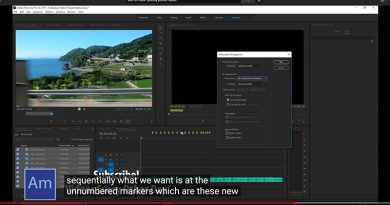Tips from an Online Journalism Judge

What is a good high school journalism website?
Well, it has been a hot debate this spring about what makes a good high school journalism website and why aren’t more schools rocking the web. Once again, I have to thank all the great journalism teachers out there who I have discussed digital journalism with this spring over the internet and at the spring conference in Kansas City.
The big takeaway from all these chats is that the judges “LEARN SO MUCH” from judging and sadly the number and quality of websites are a bit low. Below are a few tips for students and advisers trying to rock the web.
TIP 1: USE BETTER FEATURED IMAGES
The first part of the website a judge or anyone views when they come to a site are the “featured images” or images on a post. Many websites are filled with improperly fitted images, vertical photos in horizontal spaces (3:2), pixelated photos, and too many courtesy of the creative commons images. To have a rocking website make sure they are probably fitted (3:2) and include more student faces that are not posed and tell a story. Clarity, emotion, and telling a story are the keys to having quality featured images. Make sure the photos aren’t dark and don’t have tiny little people in them.
TIP 2: MAKE JOURNALISTIC VIDEOS
The lack of quality video on most high school websites that aren’t broadcast programs is shocking. My big tip is to start recording video interviews, uploading them to YouTube, and placing them inside your online story. The NY Times does a great job of adding video interviews to their stories down the right-hand column. Text on the left-hand side of the story and videos and graphics on the right-hand side for design. Once the basics are down make sure to add your publication’s logos and follow the SNO guidelines for journalistic video. The part most video stories miss is the b roll. Getting good action footage to start the video and to transition in between interviews is the key. Beyond making sure your audio is clear and video is not shakey. The hype videos are fun, but make more videos with interviews and stories. Journalism is about the people at your school and their stories.
TIP 3: UPDATE A FEW CATEGORIES EVERY WEEK
Another problem many websites face is updating all the categories every week. To improve, I would eliminate many categories and stick to News, Sports, and Opinion. Keep all the writer’s opinions in the opinion section and strive to be the best source of news and sports at your school. Unless you have Caitlin Clark at your school. Then you should for sure have a category about Caitlin Clark that gets updated every day.
TIP 4: POST ON SOCIAL MEDIA EVERY DAY – EVEN FACEBOOK
If a tree falls in the forest does it make a sound? Who cares??? If a story is published, but nobody is reading it then that is a problem. Instagram, and Tiktok are great places to reach teens. Facebook still dominates the clicks and is a great place to reach alumni and parents. Make sure to link to your stories and see what trending journalism sites are doing on social media. I encourage all editors to post on social media, but it is important to have a web and social media editor monitoring content for quality.
TIP 5: MAKE THE WEBSITE IMPORTANT TO YOUR SCHOOL and STUDENTS
The newspaper comes out and students know their stories will be read by a few hundred people. Find ways to make the website visible on televisions at your school, and in your classroom. Weekly posters hung around the school, QR codes and emails can also make the digital stories more “real” or present in schools. Digital stories can also get hundreds of thousands of views around the world. A few thousand at most will read a print story. The power of digital not only can reach the world, but are also great to use for college applications. My students really started caring more about designing their digital posts when they knew they were going to include it in their college apps.





